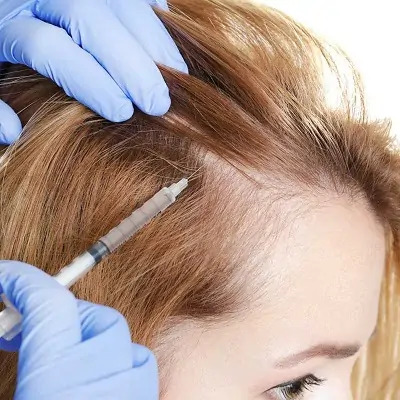Can Pubic Hair Be Used for Hair Transplant?

Hair transplant surgery is a widely accepted solution for hair loss, especially for people facing baldness or thinning hair. While scalp hair is the most commonly used donor source, questions sometimes arise about alternative donor sites—like body or pubic hair. One such intriguing question is: Can pubic hair be used for hair transplant? Let's explore the science, practicality, and expert opinions behind this concept.
What Is a Hair Transplant?
A hair transplant is a cosmetic surgical procedure that involves moving hair follicles from a donor site (usually the back or sides of the scalp) to a bald or thinning area. There are two primary techniques
FUT (Follicular Unit Transplantation)
FUE (Follicular Unit Extraction)
Both methods aim to restore natural-looking hair in areas affected by hair loss.
Why Look for Alternative Donor Hair?
In some cases, patients have limited scalp donor hair due to:
Severe baldness
Multiple failed procedures
Thin donor areas
In such situations, body hair—including chest, beard, and pubic hair—may be considered as supplemental sources.
Can Pubic Hair Be Used for Hair Transplant?
Short Answer: Yes, But with Limitations
Technically, yes—pubic hair can be used in hair transplant procedures. However, it is not a common choice and comes with several challenges and considerations.
Characteristics of Pubic Hair
Pubic hair differs significantly from scalp hair in texture, growth cycle, and appearance:
Feature Scalp Hair Pubic Hair
Thickness Fine to medium Coarse and curly
Growth Phase Long (2-6 years) Short (a few months)
Color Uniformity More consistent Often darker or wiry
Growth Speed Fast Slower
These differences make pubic hair less ideal for blending with scalp hair.
When Is Pubic Hair Considered?
Pubic hair may be considered when:
No viable scalp donor hair is left
Other body hair (beard or chest) is insufficient
Small or hidden recipient areas like scars need coverage
Repair surgeries for previous transplants require extra grafts
How the Procedure Works
If pubic hair is used, the FUE (Follicular Unit Extraction) technique is applied:
Local anesthesia is given in the pubic region.
Individual hair follicles are extracted using a fine punch tool.
Grafts are then implanted into the bald area of the scalp.
This process must be done by a skilled and experienced surgeon to reduce risks.
Advantages of Using Pubic Hair
✅ Supplementary Donor Source – Useful for patients with limited scalp or body donor areas.
✅ Repair Transplants – Can help fix poor or patchy transplant results.
✅ Camouflaging Scars – Pubic hair can work well in hiding minor scars due to its curl.
Drawbacks of Using Pubic Hair
❌ Mismatch in Texture and Appearance – It won’t blend well with natural scalp hair.
❌ Limited Growth Phase – Pubic hair stops growing earlier, reducing long-term density.
❌ Lower Yield – Fewer usable grafts can be extracted from the pubic area.
❌ Social Discomfort – Some patients may feel uneasy about harvesting hair from intimate areas.
What Do Experts Say?
Leading hair restoration experts generally prefer beard or chest hair over pubic hair for transplants. Beard hair, in particular, has a longer growth cycle and better matches the characteristics of scalp hair.
Pubic hair is usually seen as a last-resort option, not a primary donor site.
Alternative Body Hair Options
Beard Hair: Best substitute after scalp hair; thicker and more robust.
Chest Hair: Works well for blending in crown or vertex regions.
Leg or Arm Hair: Thin and short growth, less frequently used.
Is It Safe?
Yes, using pubic hair for transplant is medically safe when done by a qualified professional. However, it must be handled with care due to the sensitive nature of the donor area and the potential for infection or ingrown hairs.
Cost Consideration
Because body hair transplant—including pubic hair—is more time-consuming and technically demanding, it tends to be more expensive than regular scalp-only procedures.
Prices may vary depending on:
Number of grafts needed
Clinic and surgeon expertise
Complexity of the transplant
Final Verdict: Is It Worth It?
Using pubic hair for hair transplantation is possible but not preferred. It's a viable option only in exceptional cases where scalp and other body hair are not available. If you’re considering this approach, always consult a certified hair transplant surgeon who specializes in body hair transplant techniques.
Conclusion
While pubic hair can technically be used in hair transplant procedures, it comes with notable limitations. Most patients and surgeons opt for scalp, beard, or chest hair due to better compatibility and appearance. That said, for patients with severely depleted donor areas, pubic hair may offer a small but useful resource—especially for touch-ups, repair jobs, or minor scar coverage.
Note: IndiBlogHub features both user-submitted and editorial content. We do not verify third-party contributions. Read our Disclaimer and Privacy Policyfor details.















